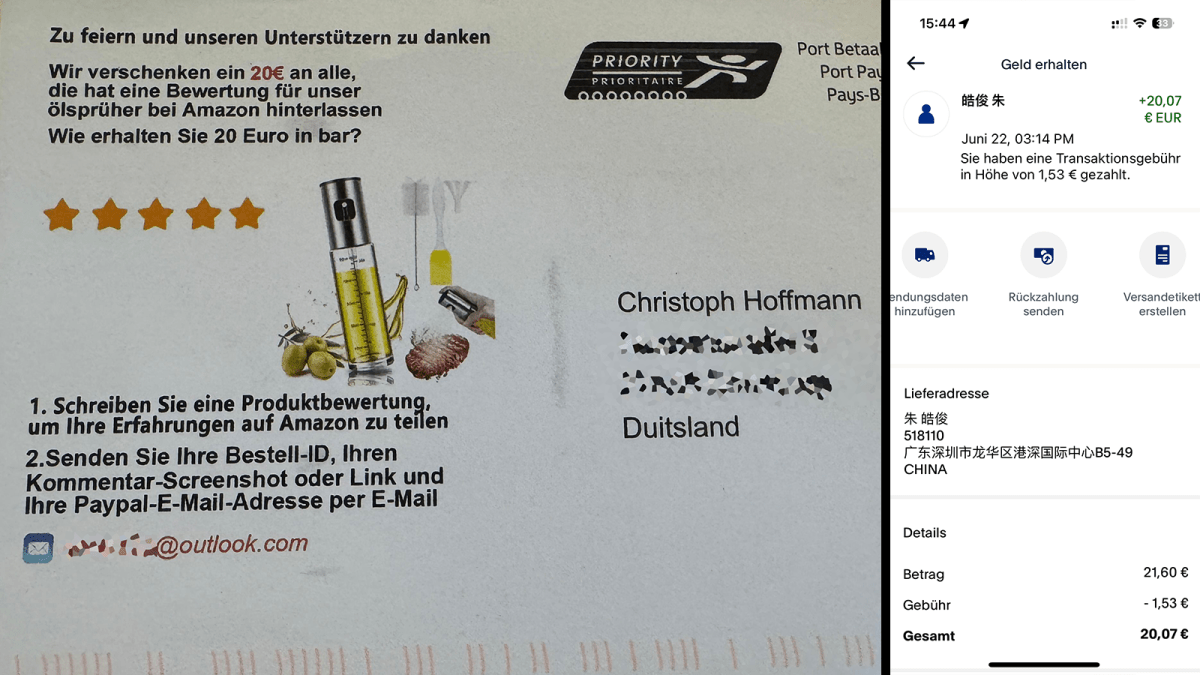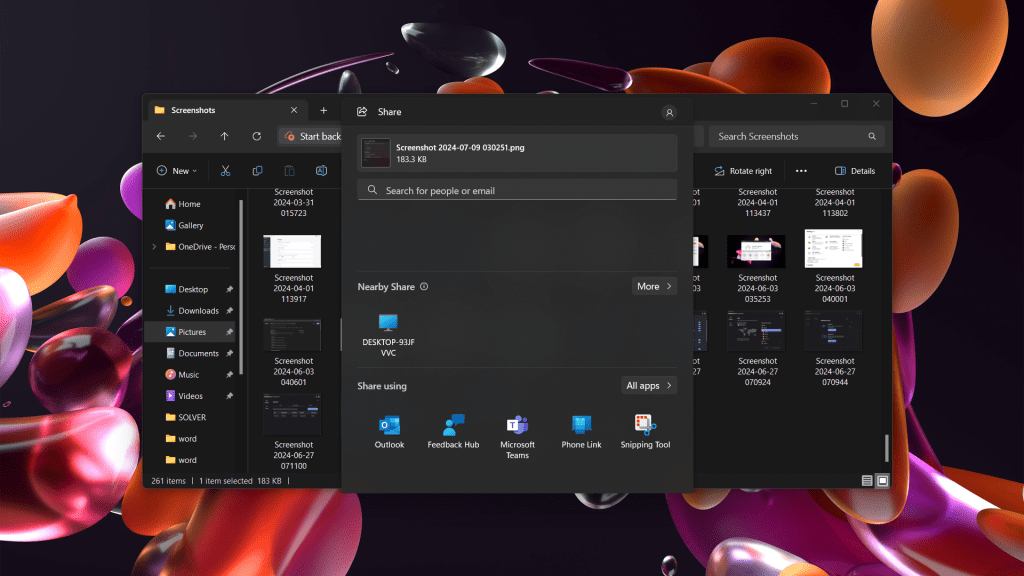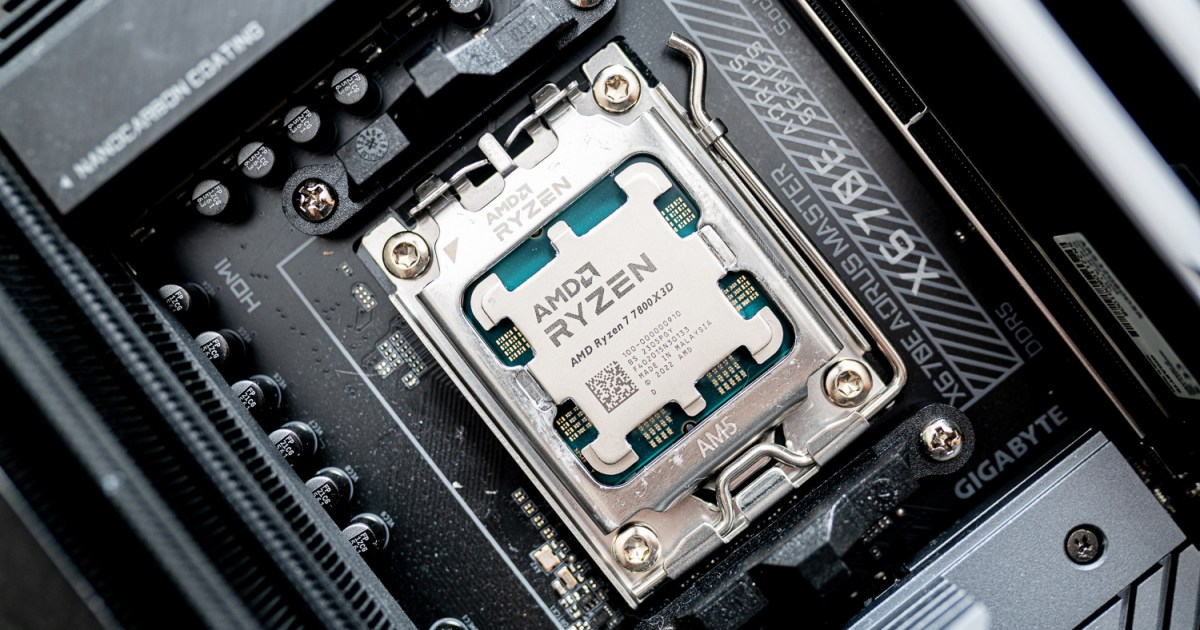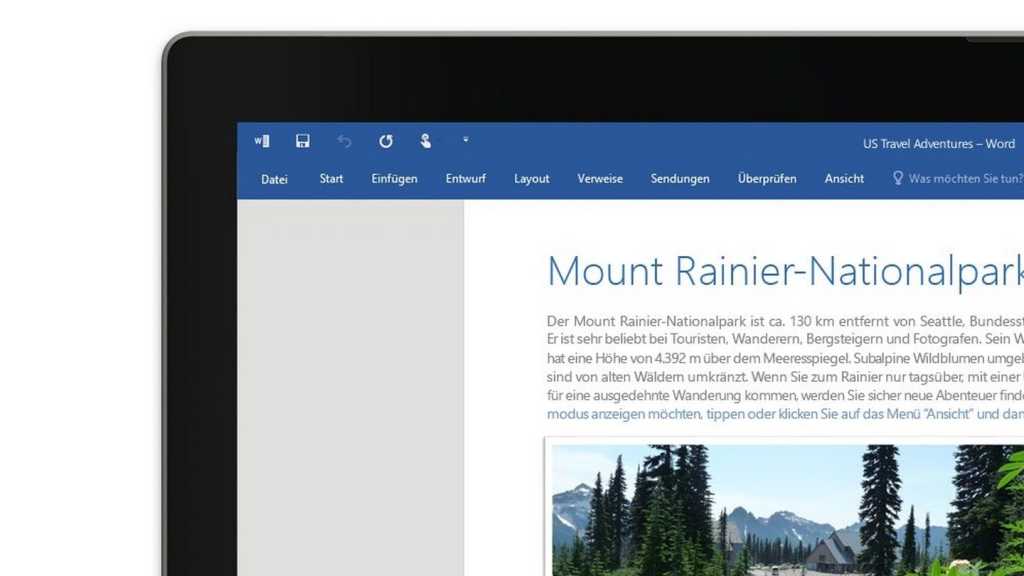Two weeks ago, I received a postcard seemingly from Amazon. Upon closer inspection, it was from a marketplace seller on Amazon, offering a tempting proposition: €20 (approximately $21.65 USD) via PayPal for a 5-star review on a €10 ($10.82 USD) oil sprayer. The instructions were simple: write the review, submit the order number and a screenshot of the published review, and provide a PayPal address for payment.
Intrigued, I decided to see how this played out. My review appeared on the product page within two days. After submitting proof of the review, I received the €20, plus transaction fees, within two hours. The payment originated from Shenzhen, China, a major manufacturing hub. The sender’s identity remained obscured by Chinese characters in the PayPal transaction details.
 Amazon-Postkarte-Paypal
Amazon-Postkarte-Paypal
The Problem of Fake Amazon Reviews
The core issue is twofold. First, Amazon remains unaware of these external solicitations for fake reviews. Sellers exploit buyer address information from previous purchases to contact customers directly, circumventing Amazon’s systems. Second, Amazon’s “verified review” system is easily manipulated. Any buyer who purchases a product at a reasonable price through Amazon can leave a review, regardless of its veracity.
Amazon claims to be combating fake reviews. Their “How We Keep Reviews Trustworthy and Useful” page outlines their efforts. So, I reported the incident to Amazon, providing all the necessary details. Their response from “Amazon Review Moderation” acknowledged the report but stated they couldn’t share the outcome of their investigation. However, the product remains listed with nearly 100 new 5-star ratings in under two weeks, raising doubts about the effectiveness of their intervention.
Navigating the Minefield of Amazon Reviews
Product reviews are crucial for both consumers and sellers, influencing purchasing decisions and building reputations. However, a 2020 Fakespot analysis revealed that 42% of Amazon reviews were inauthentic. Despite Amazon’s reported investment of over $700 million annually to remove more than 200 million fake reviews, the problem persists.
Strategies for Smart Shopping on Amazon
So, how can consumers navigate this landscape of potentially deceptive reviews? While I still consult product reviews, I prioritize negative reviews (1-star and 2-star). Recurring criticisms across multiple negative reviews often hold more weight than generic praise.
When evaluating positive reviews (4-star and 5-star), pay attention to the timing. A sudden influx of positive reviews within a short timeframe warrants skepticism, even if they’re “verified.” Comparing listings of the same product from different sellers can also be revealing. Significant discrepancies in ratings across listings suggest potential manipulation. Investigating the reviews for these discrepancies can offer valuable insights.
Finally, look beyond Amazon. Seek user feedback on forums, social media groups, and reputable independent review sites. These sources often provide more nuanced and trustworthy perspectives.
As events like Amazon Prime Day approach, heightened vigilance is crucial. Sellers often employ aggressive tactics to boost sales during these periods, increasing the risk of encountering manipulated reviews. By employing these strategies, consumers can make more informed purchasing decisions, minimizing the influence of fake reviews.











